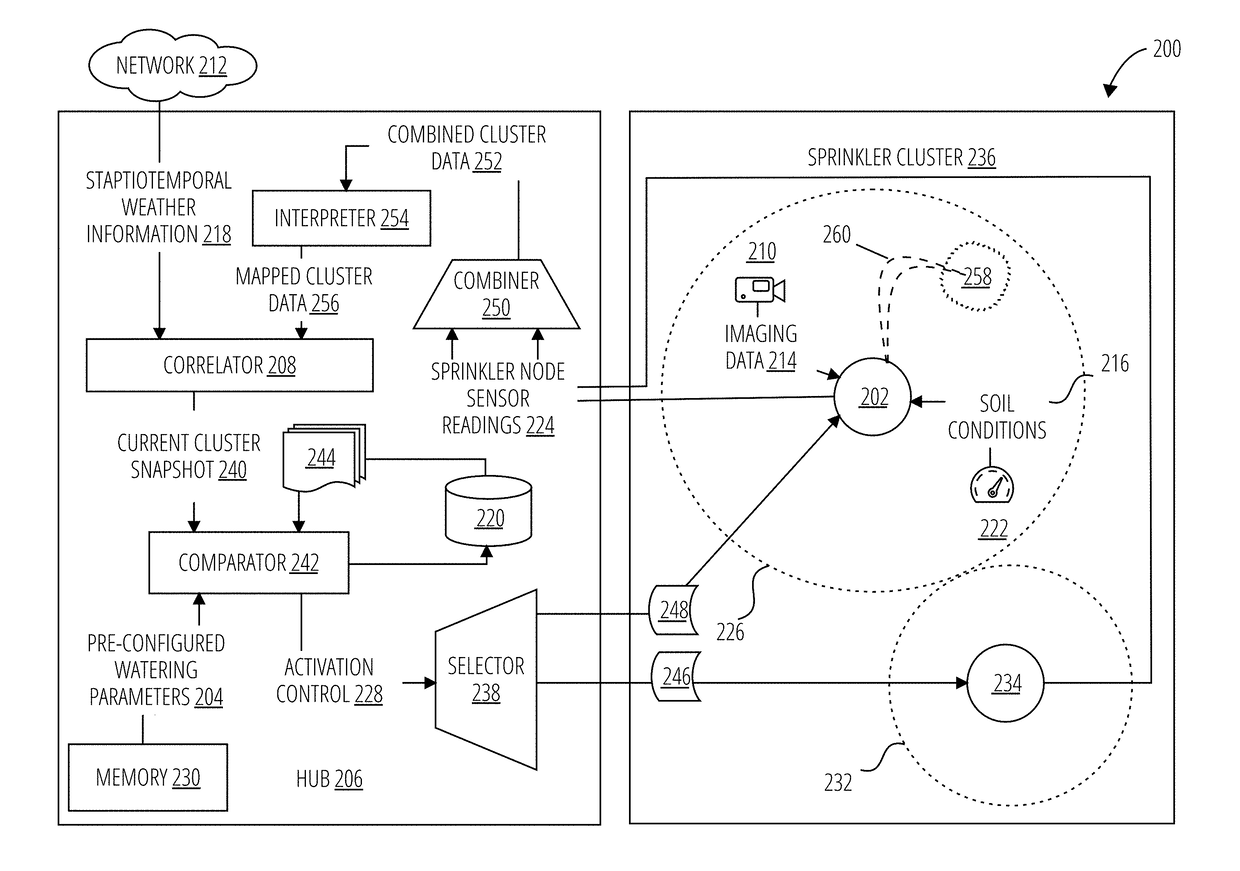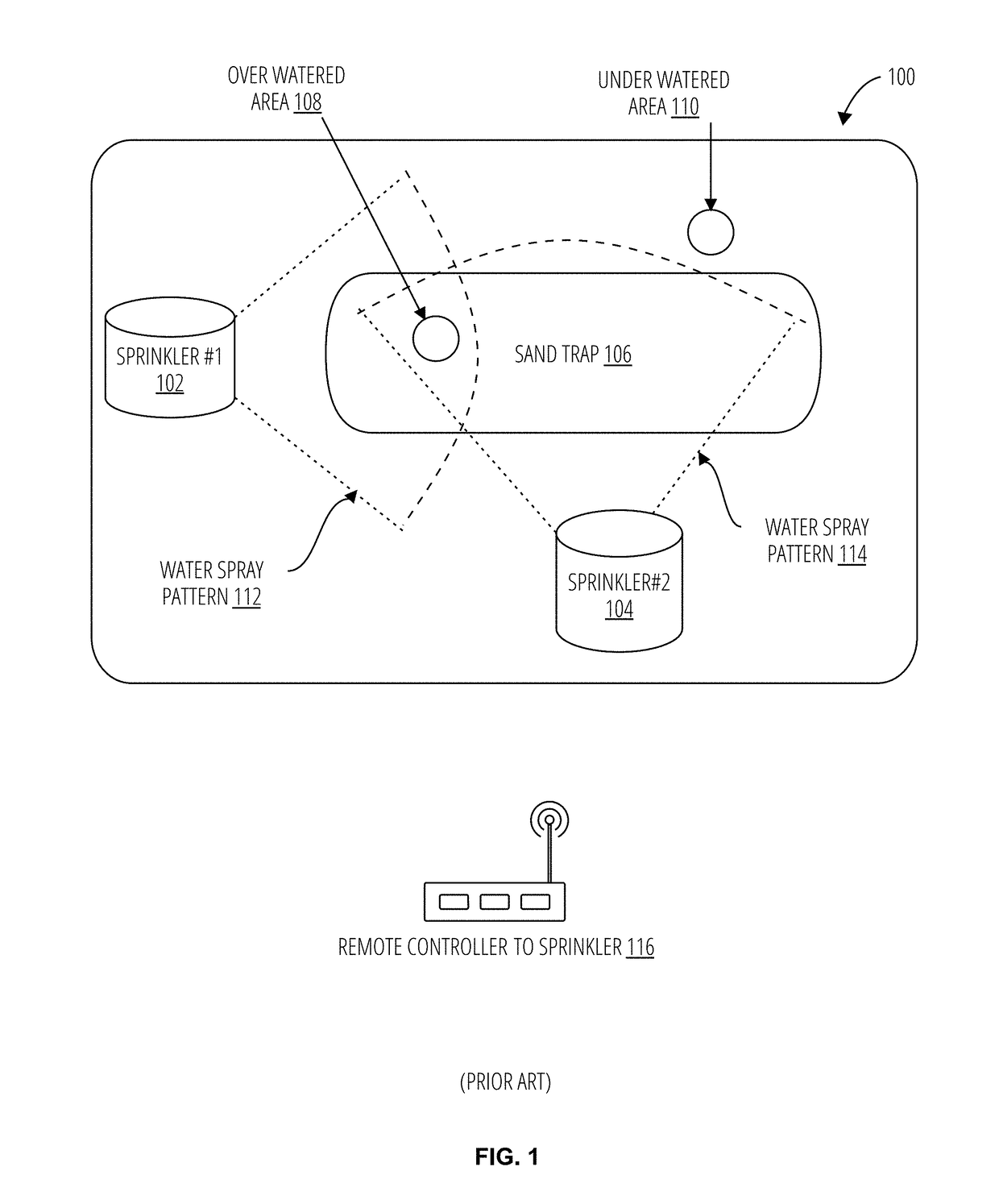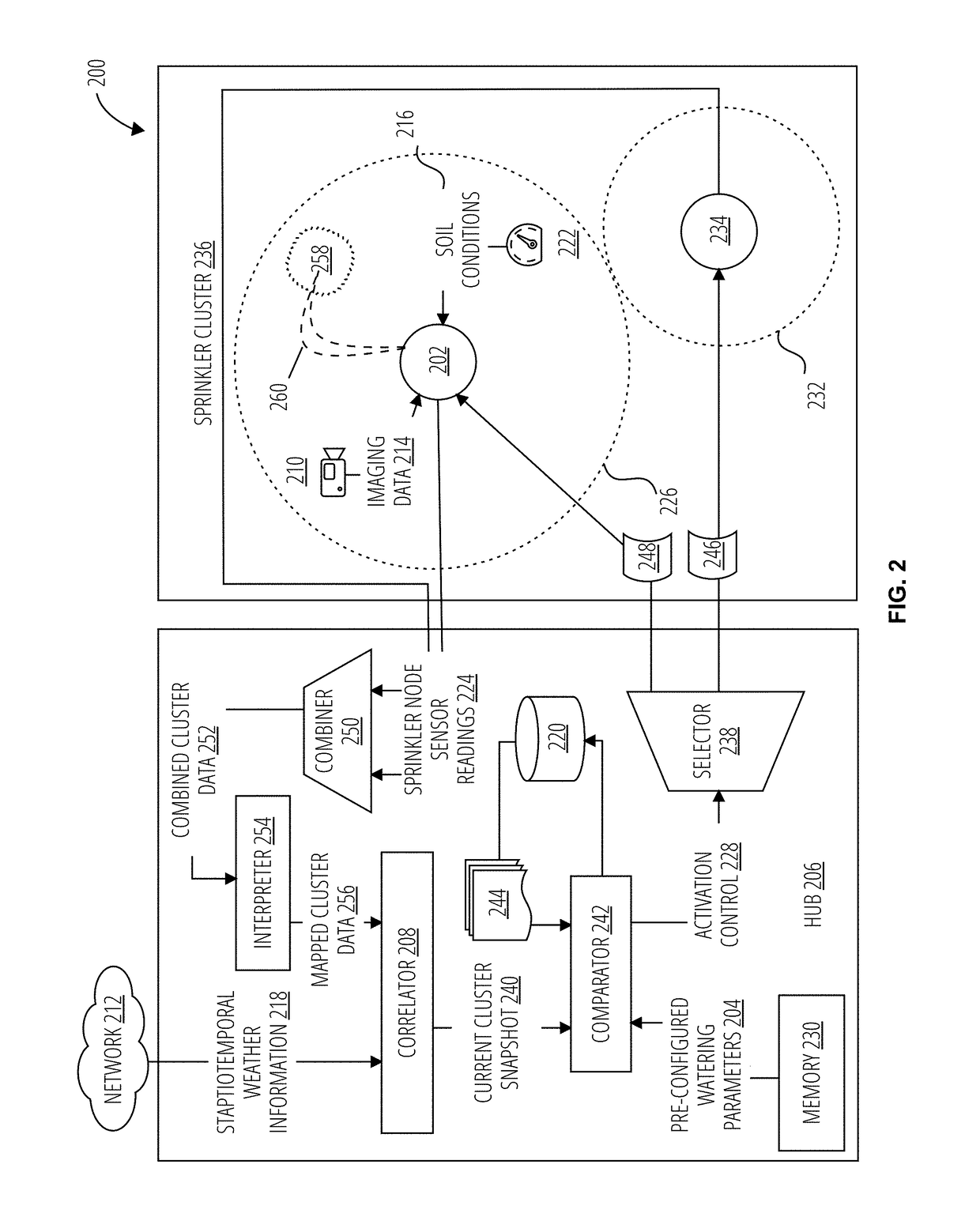Automated adaptive sprinkler system
a sprinkler system and automatic technology, applied in the field of automatic adaptive sprinkler systems, can solve the problems of large commercial sprinklers that can cover large areas, can not vary the amount of water, and the design of conventional sprinklers is limited to fixed patterns
- Summary
- Abstract
- Description
- Claims
- Application Information
AI Technical Summary
Benefits of technology
Problems solved by technology
Method used
Image
Examples
Embodiment Construction
[0032]A process for operating a system for allocating irrigation resources may include operation of image sensors and ground sensors, of sprinkler node to collect imaging data and soil condition readings, for a watering area proximal to the sprinkler node. The system may incorporate a combiner operated to combine sprinkler node sensor readings, comprising the imaging data and the soil condition readings, from each sprinkler node in a sprinkler cluster, to form combined cluster data. The system for allocating irrigation resources may include an interpreter operated to generate mapped cluster data through mapping of the combined cluster data to a geolocation map. A correlator may be included to correlate the mapped cluster data and spatiotemporal weather information to generate a current cluster snapshot. A comparator may be configured with pre-configured watering parameters stored from memory to compare the current cluster snapshot with recorded sprinkler cluster activity data stored...
PUM
 Login to View More
Login to View More Abstract
Description
Claims
Application Information
 Login to View More
Login to View More - R&D
- Intellectual Property
- Life Sciences
- Materials
- Tech Scout
- Unparalleled Data Quality
- Higher Quality Content
- 60% Fewer Hallucinations
Browse by: Latest US Patents, China's latest patents, Technical Efficacy Thesaurus, Application Domain, Technology Topic, Popular Technical Reports.
© 2025 PatSnap. All rights reserved.Legal|Privacy policy|Modern Slavery Act Transparency Statement|Sitemap|About US| Contact US: help@patsnap.com



